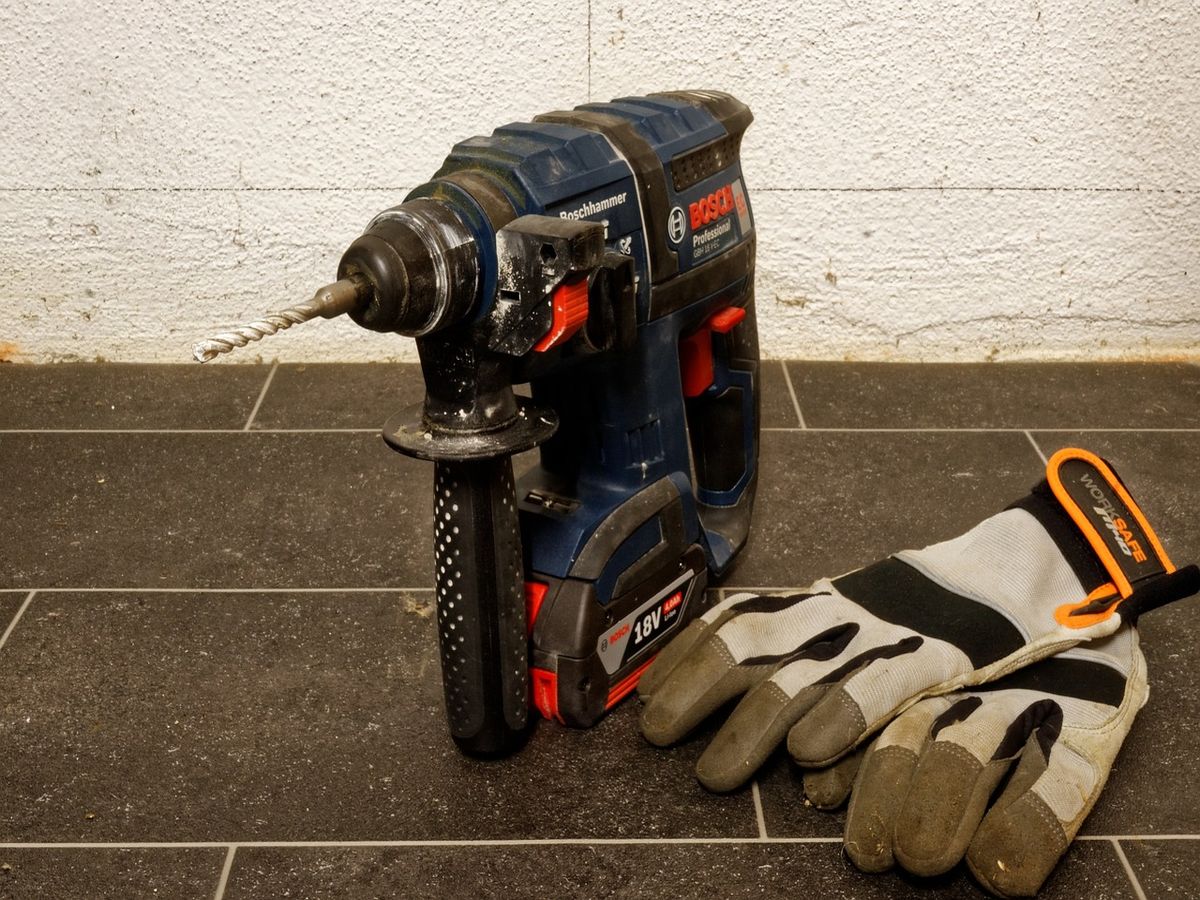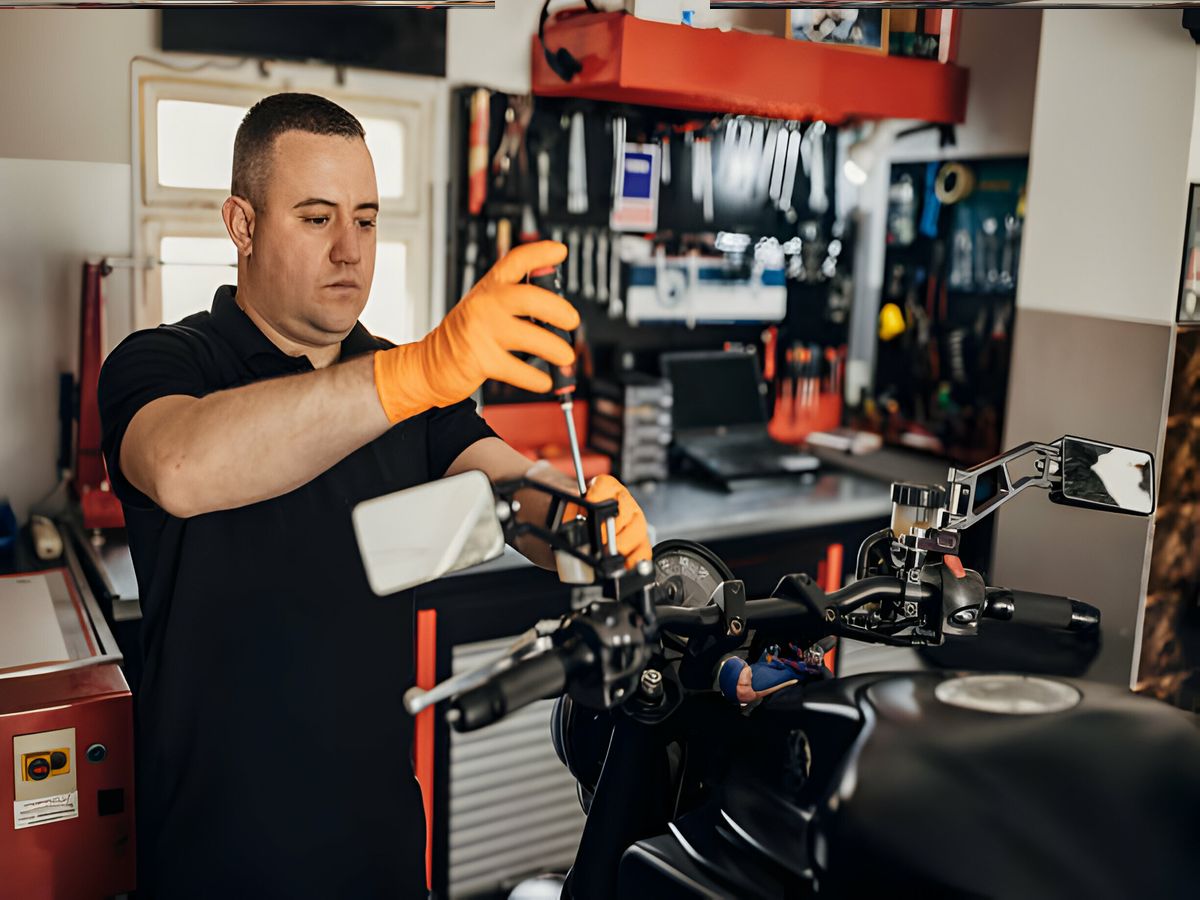Mesh gloves or Mesh mitts, comprising interwoven metal or steel strands, are essential safety equipment designed to protect hands from cuts and abrasions in high-risk environments. Their primary purpose is to provide a reliable barrier against sharp objects and potential hazards while allowing for flexibility and dexterity in tasks where precision is crucial. These gloves are indispensable tools for ensuring worker safety and reducing the risk of hand injuries in diverse occupational settings.
Importance of Mesh Gloves in Various Industries
Mesh gloves hold immense significance across a range of industries, including food processing, manufacturing, and construction. Their ability to safeguard against cuts and lacerations makes them invaluable assets in workplaces where sharp tools and machinery are commonplace. By enhancing safety protocols, mesh mitts contribute to improved productivity and reduced downtime due to injuries.
Overview of Secondary Keywords
This article offers a comprehensive exploration of mesh glove and their significance, covering various secondary keywords such as black mesh gloves, metal mesh gloves, and long mesh gloves. Each keyword represents a specific aspect of mesh glove functionality and application, contributing to a holistic understanding of their importance in occupational safety.
The Evolution of Mesh Glove
Historical Background and Development
Mesh gloves have a rich historical background, originating from the need for protective gear in industries where hand injuries were prevalent. Early versions of these gloves date back centuries, with rudimentary designs crafted from woven materials like leather or cloth to offer minimal protection. Over time, advancements in craftsmanship and industrialization led to the development of more sophisticated mesh glove prototypes, particularly in response to the growing demand for safer working conditions.
Technological Advancements in Mesh Cutting Glove Manufacturing
Technological innovations have revolutionized the manufacturing process of mesh cutting glove, resulting in significant improvements in both design and performance. Modern manufacturing techniques leverage cutting-edge materials and machinery to produce gloves with enhanced durability, flexibility, and protective capabilities. From the introduction of specialized alloys to the implementation of advanced weaving methods, these technological advancements have elevated the standard of mesh glove quality, making them indispensable safety assets in various industries.
Understanding Different Types of Mesh Gloves
Metal Mesh Gloves:
Metal mesh gloves are typically made from interlocked stainless steel rings. They offer high levels of cut and puncture resistance, making them suitable for applications where workers handle sharp objects or tools. These gloves protect against lacerations, abrasions, and even some degree of impact resistance. They are commonly used in industries such as food processing, meatpacking, glass handling, and metal fabrication. Metal mesh mitts are flexible and allow for dexterity, enabling workers to perform intricate tasks while maintaining safety. They are often available in different sizes to ensure a proper fit for various hand sizes. Regular cleaning and maintenance are necessary to prolong their effectiveness and lifespan.
Steel Mesh Gloves:
Steel mesh gloves, specifically made from steel rings, provide exceptional cut and puncture resistance, ideal for high-risk environments where workers encounter sharp objects, blades, or tools. Mesh Steel gloves provide robust protection against lacerations, punctures, and abrasions, making them essential in meat and poultry processing, butchery, metalworking, and glass handling industries. They are designed to withstand heavy-duty use and provide long-lasting durability. Like other mesh gloves, they allow for flexibility and dexterity, enabling workers to perform intricate tasks safely. Regular cleaning and maintenance are important to ensure their effectiveness and longevity.
Black Mesh Gloves:
Black mesh gloves are gloves made from a mesh material that is colored black. These gloves offer a combination of functionality and style. The black color can serve aesthetic purposes, providing a sleek and modern look. Additionally, black mesh mitts may hide stains and dirt better than lighter-colored gloves, making them suitable for activities where cleanliness is important, such as food preparation, gardening, or automotive work. They still retain the breathable and flexible properties of traditional mesh mits, allowing for comfortable wear during various tasks. black gloves mesh are available in different styles and designs to cater to different preferences and needs.
Long Mesh Gloves:
Long mesh gloves are gloves that feature an extended length, typically covering not only the hands and wrists but also part of the forearm. These gloves provide additional protection compared to standard-length gloves, offering coverage against scratches, cuts, and abrasions to a larger area of the arm. Long mesh gloves are commonly used in applications where workers are exposed to hazards that extend beyond the hands, such as handling thorny plants, working with rough materials, or performing tasks in environments with potential splashes or spills.
They are especially beneficial in industries such as gardening, landscaping, agriculture, and construction, where workers need protection for their arms and hands. Long mesh mitts come in various sizes and styles to accommodate different arm lengths and preferences, and they are typically made from breathable materials to ensure comfort during extended wear.
Mesh Fingerless Gloves:
Mesh fingerless gloves are a type of glove that covers the hand and wrist but leaves the fingers exposed, providing a combination of protection and flexibility. These gloves are typically made from a breathable mesh material, offering ventilation and comfort during wear. The fingerless design allows for maximum dexterity and tactile sensitivity, making them suitable for tasks where precision and grip are important, such as cycling, weightlifting, gardening, or driving. They also provide some protection against abrasions and minor impacts while maintaining the ability to perform intricate movements with the fingertips.
Mesh fingerless gloves come in various styles and designs, including padded versions for added protection or fingerless gloves with reinforced palms for improved durability. They are popular among athletes, outdoor enthusiasts, and workers in industries where hand protection is needed without sacrificing finger mobility.
Applications and Industries Implementing Mesh Gloves
Certainly! Mesh mitts find applications across various industries due to their protective properties and versatility. Let’s delve into each of the mentioned industries:
Food Processing and Handling:
- Mesh gloves are commonly used in food processing and handling to protect workers’ hands from cuts, abrasions, and punctures while handling sharp tools such as knives, slicers, and graters.
- They help maintain hygiene standards by preventing contamination from hands and reducing the risk of foodborne illnesses.
- Meshmitts are often made from materials like stainless steel, which are easy to clean and sanitize, making them suitable for use in food environments.
Construction and Manufacturing:
- In construction and manufacturing, mesh mitts protect sharp edges, metal burrs, and abrasive materials.
- Workers handling sheet metal, glass, or other sharp objects benefit from the cut-resistant properties of mesh gloves, reducing the risk of injuries.
- These gloves also offer dexterity, allowing workers to handle small parts and tools with precision while still providing the necessary protection.
Kitchen and Culinary Use:
- Mesh mitts are popular in professional kitchens and culinary settings where chefs and kitchen staff handle sharp knives and kitchen tools daily.
- They protect against accidental cuts and injuries during food preparation, chopping, and slicing tasks.
- Mesh gloves made with comfortable materials allow for extended wear, making them suitable for prolonged use in busy kitchen environments.
Medical and Laboratory Settings:
- In medical and laboratory settings, mesh mitts serve as a protective barrier for workers handling sharp instruments, needles, and glassware.
- Laboratory technicians, phlebotomists, and healthcare professionals often use steel mesh gloves during procedures involving a risk of accidental punctures or cuts.
- Additionally, they utilize mesh gloves in sterile environments where traditional gloves may not offer adequate protection against sharp objects.
Overall, mesh mitts offer a versatile solution for industries requiring hand protection against cuts, punctures, and abrasions, while also allowing for dexterity and comfort during various tasks.
Safety Features and Benefits of Mesh Gloves
Protection Against Cuts and Abrasions:
- Mesh mitts provide reliable protection against cuts and abrasions, thanks to their robust construction and materials.
- The interwoven metal or synthetic fibers create a strong barrier that prevents sharp objects from penetrating the skin, reducing the risk of injuries.
- Whether in food processing, construction, or medical settings, mesh gloves offer essential protection against common workplace hazards without compromising dexterity.
Heat Resistance and Comfort:
- Many mesh mitts are designed with heat-resistant materials, making them suitable for tasks involving hot surfaces or equipment.
- Despite their protective properties, mesh mitts are engineered to be breathable and comfortable, allowing for extended wear without causing discomfort or excessive sweating.
- This combination of heat resistance and comfort ensures that workers can perform tasks safely and efficiently in various environments.
Durability and Longevity:
- Mesh gloves are known for their durability and longevity, making them a cost-effective investment for businesses.
- The sturdy construction and high-quality materials ensure that mesh glove can withstand repeated use and exposure to demanding conditions without deteriorating quickly.
- With proper care and maintenance, mesh mitts can provide reliable protection over an extended period, minimizing the need for frequent replacements.
Hygiene and Cleanliness:
- Maintaining hygiene and cleanliness is crucial in industries such as food processing, healthcare, and laboratory settings.
- Mesh gloves are easy to clean and sanitize, reducing the risk of cross-contamination and promoting a hygienic work environment.
- Their smooth surface and non-absorbent properties make it simple to remove debris and contaminants, ensuring that hands stay clean and protected throughout use.
In summary, mesh mitts offer essential safety features and benefits, including protection against cuts and abrasions, heat resistance and comfort, durability and longevity, and hygiene and cleanliness. Their versatile design makes them suitable for a wide range of industries and applications, providing workers with reliable hand protection in various work environments.
How to Choose the Right Mesh Gloves
Understanding Material Composition:
- When selecting mesh mittens, it’s important to consider the material composition to ensure they meet the specific requirements of your industry and tasks.
- Different materials, such as stainless steel, synthetic fibers, or a combination of both, offer varying levels of cut resistance, flexibility, and durability.
- Assessing the material composition allows you to choose mesh mittens that provide optimal protection and performance for your intended use.
Sizing and Fit Considerations:
- Proper sizing and fit are essential for ensuring the comfort, dexterity, and effectiveness of mesh gloves.
- Look for gloves available in a range of sizes to accommodate different hand sizes and shapes.
- Consider trying on gloves or referring to sizing charts provided by manufacturers to determine the best fit, ensuring that the gloves are neither too tight nor too loose.
Special Features and Customization Options:
- Explore special features and customization options available for mesh mittens to address specific needs or preferences.
- Some gloves may have additional features such as adjustable wrist closures, reinforced fingertips, or ergonomic designs for enhanced comfort and functionality.
- Certain industries or applications may require customized mesh mitts tailored to unique requirements, such as increased heat resistance or compatibility with touchscreen devices.
By considering these factors—material composition, sizing, fit, and special features—you can choose mesh gloves that provide optimal protection, comfort, and functionality for your intended use without compromising on safety.
Proper Maintenance and Care of Mesh Gloves
Cleaning and Sanitization Procedures:
- Regular cleaning and sanitization of mesh mitts help remove contaminants and maintain hygiene standards.
- Follow manufacturer recommendations for cleaning methods and products suitable for the specific material composition of the mesh mitten.
- Consider using mild detergents, warm water, and a soft brush to gently scrub the gloves, ensuring thorough cleaning without damaging the mesh.
- After cleaning, rinse the gloves thoroughly and allow them to air dry completely before storage or reuse.
Storage and Handling Recommendations:
- Proper storage and handling can prevent damage and prolong the lifespan of mesh gloves.
- Store clean, dry mesh mitts in a designated area away from direct sunlight, moisture, and heat sources to prevent deterioration.
- Avoid storing mesh mitts in crowded or tightly packed spaces that could cause deformation or damage to the gloves.
- Handle mesh glove with care to avoid snags, tears, or punctures, especially when using sharp objects or machinery.
Inspection and Replacement Guidelines:
- Regularly inspect mesh mittens for signs of wear, damage, or deterioration that may compromise their effectiveness.
- Check for broken strands, holes, or weak spots in the mesh fabric that could indicate the need for replacement.
- Replace damaged or worn-out mesh mitts promptly to maintain adequate protection for hands and prevent injuries.
- Establish a schedule for routine inspections and replacement based on the frequency of use and the level of wear and tear experienced by the mesh gloves.
By following proper cleaning and sanitization procedures, implementing storage and handling recommendations, and adhering to inspection and replacement guidelines, you can ensure that mesh mitts remain in optimal condition for prolonged use, providing reliable protection in various work environments.
Common Misconceptions and FAQs About Mesh Gloves
Myth-Busting |Do Mesh Mittens Always Protect Against Cuts?
- Mesh gloves offer excellent protection against cuts, but it’s essential to understand their limitations.
- While mesh mittens are highly effective at preventing most cuts and lacerations, they may not provide absolute protection against extremely sharp or serrated edges.
- It’s crucial to use mesh mittens in conjunction with safe handling practices and proper training to minimize the risk of injury fully.
- Additionally, regular inspection and maintenance of mesh mittens are necessary to ensure their integrity and effectiveness over time.
Addressing Concerns About Comfort and Dexterity
- One common concern about mesh gloves is their perceived lack of comfort and dexterity.
- However, advancements in design and materials have led to the development of mesh mitts that prioritize both protection and wearer comfort.
- Mesh mitts with ergonomic designs, adjustable closures, and flexible materials offer improved comfort and dexterity without compromising safety.
- Users need to try on different styles and sizes of mesh gloves to find the option that best fits their hands and preferences.
FAQs | Responding to Consumer Inquiries
- Frequently asked questions about mesh gauntlets may include inquiries about their suitability for specific tasks, cleaning instructions, and sizing guidelines.
- Providing clear and concise answers to these FAQs can help consumers make informed decisions and use mesh gauntlets effectively.
- Address common concerns such as whether mesh mitts are food-safe, how to properly clean and sanitize them, and how to determine the correct size for optimal fit.
- Additionally, offers guidance on when to replace mesh mitts based on wear and tear, as well as how to store and handle them properly to maintain their integrity.
By addressing common misconceptions, concerns about comfort and agility, and frequently asked questions about mesh gloves, we can help users understand their capabilities, limitations, and best practices for use.
Conclusion
Mesh gloves are indispensable in various industries, offering crucial protection against cuts and abrasions while maintaining dexterity. Key considerations include material choice, sizing, and proper maintenance. Addressing misconceptions and FAQs ensures users understand their capabilities. These gloves enhance safety and efficiency by mitigating workplace risks and promoting productivity. Investing in quality gloves and adhering to safety protocols fosters a safer work environment and protects employees. Understanding the significance of mesh mittens in safety underscores their essential role in workplace well-being and productivity.















Leave a Reply